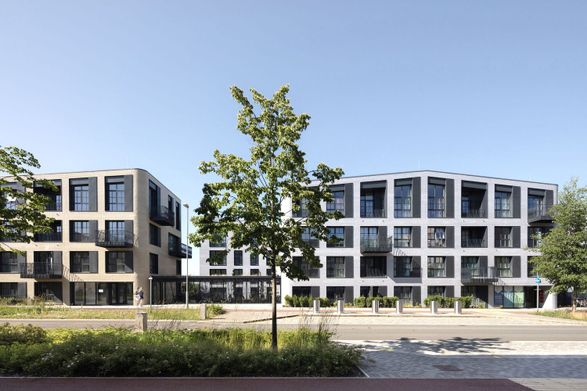
Rubicon Sustainable Living
ARCHITECTS
Alison Brooks Architects
CLIENT
The Hill Group
PROJECT TEAM
Alison Brooks, Michael Mueller, Ceri Edmunds, Chen Man, Katie Albertucci, Rowan Melville, Emily Beavan, Natalie Bagnoud, Julio Poleo, Monica Garcia, Felix Cruz, Jan Cieslewicz
MAIN CONTRACTOR
The Hill Group
MEP ENGINEER
Whitecode Consulting
STRUCTURAL ENGINEER
Walker Associates, Gravity Consulting
CIVIL ENGINEER
Gta Civils
LANDSCAPE ARCHITECTS
Townshend, Acd
PLANNING CONSULTANT
Aecom
APPROVED BUILDING INSPECTOR
3c Building Control
PHOTOGRAPHS
Hufton + Crow, Ben Hughes, Ben Luxmoore, Matthew Blunderfield
ACOUSTICS
Cass Allen
AREA
14246 M²
YEAR
2025
LOCATION
United Kingdom
CATEGORY
Apartments
Text description provided by architect.
Alison Brooks Architects Unveil New Model for Sustainable Living in Cambridge. "More than just a housing project, Rubicon offers a vision for the future of high-density, low-rise living, by interweaving cycling, home-working, community spaces, and landscapes.
We have reimagined how people can live, work, and connect with one another as a community of shared interests." - Alison Brooks, Principal at Alison Brooks Architects.
Rubicon introduces a new typology rooted in cycle-centered mobility, serving as a welcoming gateway and defining the urban edge of the 150-hectare Eddington master plan in northwest Cambridge.
This net-zero development, designed for the University of Cambridge and The Hill Group, redefines community living by merging warehouse loft typologies with the collegiate court. Incorporating co-working spaces, sunlit courtyards, and cycle-friendly apartments, the scheme acts as the urban threshold to the wetlands beyond.
Tom Hill, Managing Director at The Hill Group, says, "Rubicon sets the standard in sustainable living, using innovative, seamlessly integrated methods to minimize environmental impact.
Key features include a development-wide rainwater harvesting system and underground waste management.'' The development offers 186 homes over 0.74 hectares, 35% of which are dedicated to university and key-worker housing, in five tessellating S- and L-shaped buildings.
Their distinctive architectural language, featuring glazed bricks, curved corners, and undulating roofs, conveys permanence and versatility. Between the buildings, urban-facing courtyards connect with ones that look out over the landscape to 'stitch' these two contexts together.
Drawing upon 19th-century warehouse and mill typologies traditionally found bordering rural settings, the Rubicon evokes a sense of historical continuity with its location, clearly defining the urban edge.
A sculptural roofline that rises and falls softly unites the separate forms, echoing the Cambridgeshire landscape.
The western edge of the site features a courtyard block inspired by Cambridge's famed colleges.
The glazed brick material palette of shimmering hues, from tranquil green and yellow to light blue, azure, and silvery grey, gives each façade a unique identity.
Deeply recessed south-facing balconies provide solar shading while offering unobstructed views.
The ground floor is a catalyst for community, with semi-public co-working foyers in each block encouraging spontaneous exchanges among residents, including academics, professionals, university workers, students, and retirees.
These robust 'third spaces' create hubs of activity where residents host regular social gatherings.
Rubicon sets a new UK benchmark in residential sustainability as a zero-carbon operational energy development, achieving Code for Sustainable Homes (CfSH) Level 5, with 82% of the building's operational energy generated on-site.
A 'fabric-first' approach emphasizes low U-values and air permeability, complemented by a Combined Heat and Power (CHP) District Heating System and efficient Mechanical Heat Recovery Ventilation (MHVR) systems to minimize energy demand.





































